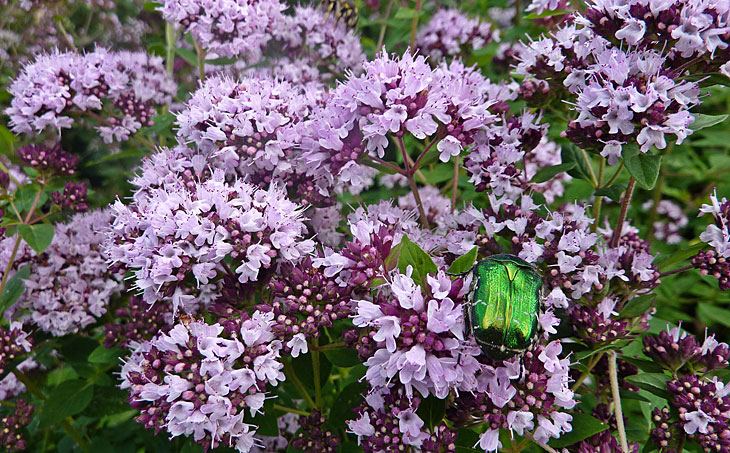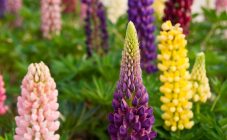Content:
Aconite is a perennial poisonous herb, common in mountainous areas, in humid places along rivers and along roadsides where fertile soil takes place. In the wild, aconite is widely distributed in Europe, Central Asia, Siberia and China.
Description
Aconite is a flower that is rather unpretentious to growing conditions, however, it is advisable to grow it in slightly shaded areas, since direct sunlight can cause burns to the leaves, which will subsequently impair growth and flowering.
Swampy and waterlogged soils are not suitable, there is a threat of root rot. Poorly tolerates rocky, crushed stone and sandy soils, prefers loose, light soil.
Before planting aconite, the earth is dug up, fertilized with peat, compost or other organic fertilizer.
For mulching, steamed sawdust, straw, peat and freshly cut grass are used.
Watering is carried out infrequently, depending on climatic conditions. The plant is very drought tolerant.
Each variety is unique in its own way: what one loves is possibly destructive for the other:
- ¾ curly varieties love shade;
- ¾ Aconite Karmikhel and Antorra prefer sunny places;
- ¾ absolutely all varieties do not tolerate through and strong winds;
- ¾ groundwater has a detrimental effect on the root system;
- ¾ the area under the crown of trees is a tidbit of any of the aconites.
Reproduction of aconite
Aconite can be propagated in two ways: by seeds and vegetatively. The latter method is most preferable, since it makes it possible to obtain an unusual varietal flower. It is not recommended to plant aconite in the spring.
Cuttings
The method of cultivating aconite with stem cuttings is the most promising. A flower belongs to a group of plants whose cuttings are suitable for reproduction only during a certain period, since the process of active shoot formation of aconite occurs only at the beginning of the growing season, in exceptional cases it lasts until the beginning of flowering. After the completion of the shoot formation, the shoots start to actively grow woody, become virtually unsuitable for reproduction, because tubers are not formed in such woody shoots.
The process of harvesting stem cuttings:
- use three-year-old shoots of a healthy mother bush;
- for the cutting, the upper section of the maternal process is cut;
- preference is given to shoots with close internodes and somewhat leafy;
- the cut is carried out in the morning, while the turgor pressure of the cells is maintained;
- there should be one bud and a leaf on the handle (before the stem strengthens, the leaf will feed it);
- to protect against decay, the plots are treated with a fungicide.
The soil for rooting cuttings must be loose, fertile (sandy loam, drained). The site is slightly shaded, protected from direct sunlight and through winds.
The cuttings are buried 2 cm into the abundantly watered ground.
On hot days, cuttings are sprayed at least 3 times a day, watered 1-2 times a day. Do not water in rainy weather. Such increased watering is required for the plant within 20-25 days.Then the spraying is stopped, and the irrigation rate is reduced - irrigate only as the soil dries up.
Cuttings will take root in about 1.5-2 months. Then you can feed the plants with mineral fertilizers, phosphorus-potassium fertilizers are applied on cloudy days.
For the winter, the cuttings are covered with foliage; in the spring, the cuttings are transplanted to a permanent place of residence.
Layers
Aconite is a plant whose cultivation is possible with the help of layering, unfortunately, not all varieties are amenable to this. The breeding method is the least laborious, does not require control over plants and external conditions. The main thing is to choose the most suitable shoot and create conditions that will contribute to root formation. Powerful, well-growing stems take root well. Preference is given to annual shoots, which are easier to bend to the soil.
Lay the layers in the spring. The selected shoot is bent to the ground, marking the place where rooting is planned. They dig a groove 15 * 15 cm, put the stem into it, leaving the top of the head outside (at least 20 cm). If the stem is actively "pulled out", then it is additionally pinned to the soil and covered with earth.
Terms:
- ¾ light: the incoming light is covered (with soil);
- ¾ soil: well drained, excellent moisture retention, loose and fertile soil;
- ¾ warmth must be sure.
In difficult-to-rooted varieties, an incision is made on the stem and a root growth stimulator (Kornevin) is used.
In the fall, when the plants have completely bloomed and the foliage has fallen off, young rooted layers are cut off from the mother bush with a pruner. You can transplant young bushes, if necessary, to a freer area.
Seeds
Aconite planting and care in the open field: in the fall, the seed is sown in loose, moist soil, optimally at the end of October or November, when the cold snap becomes constant. Seeds begin to sprout in early spring after the snow melts. In the soil, the seed undergoes a process of natural stratification. If you plant seeds in the spring, then the dense shell will not allow the sprouts to break through in the same year, and they will only sprout the next year.
You can use seedling planting of aconite, this method is longer and more laborious: stratification is carried out first for 30 days at a temperature of 20-25 ° C, then about 3 months at 2-4 degrees. The stratification procedure allows for stronger, healthier seedlings. Seedlings dive after the formation of 2-3 true leaves; Aconite is transplanted into open ground in the fall. The distance between plants is at least 25 cm.
Dividing the bush
In this way, it is good to propagate rhizome species (arcuate aconite, bearded). The bush is divided into several parts and planted.
Tubers
The tuber is separated from the bush, germinated before planting. They are deepened by 7-10 cm. You can divide the tuber into several plots before planting.
Agrotechnics
The cultivation technique of this crop is quite simple. Aconite flower perennial cultivation and care:
- ¾ the plant is watered without fanaticism, since excess moisture harms the root system;
- ¾ after watering, the soil is loosened, the grown weeds are removed;
- ¾ twice a season, the soil is mulched with a layer of peat or compost.
Top dressing is not necessary, but it will be very useful on scarce land. It is better to apply top dressing before flowering, in early spring, organic and mineral.
Aconite is not picky about the choice of neighbors, it gets along well with peonies, irises, rudbeckia, aquilegia. Moreover, from these flowers you can create an incredibly beautiful composition.
Bloom
There are often cases when there are no flowers at all on aconite, and only green mass grows.So why doesn't aconite bloom? Perhaps the reasons are in an incorrectly selected territorial location (climate, soil, humidity), care (excessive or insufficient watering, overfeeding, or, conversely, a lack of nutrients, improper pruning) or damage to the plant by diseases or parasites. Perhaps the tree is not yet ripe - on average, the plant begins to bloom for 2-3 years. Late flowering may be associated with cold summers.
To prevent such a problem, it is necessary to properly care for the plant.
Plant care in autumn
Growing a perennial aconite flower in the fall involves preparing for wintering, for this, after flowering, the plant is cut shortly, the rhizome is covered with a 15-20 cm layer of peat or more to completely cover the remaining stems. This shelter will be enough, since most varieties have high frost resistance.
Aconite is unpretentious in care and cultivation; it does not require any special skills from a gardener. You can grow absolutely any variety both in the garden and in the house, the main thing is to take into account the conditions necessary for a flower. In response, the "poisonous household" will delight with beautiful and lush flowers, and will bring medicinal benefits.

















